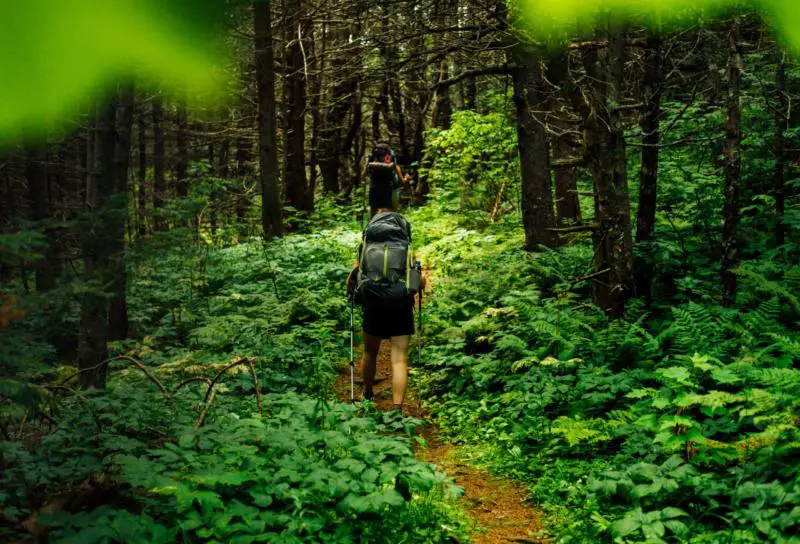Hiking is a versatile activity that may take place in all sorts of terrains. Whereas hiking on a straight asphalt road is the fastest, it is far from the most interesting place to conduct your outdoor adventures.
The speed with which you can hike through a forest really depends on the specific forest vegetation, elevation change, path availability, the amount of weight you are carrying etc.
While a trained hiker with a moderate backpack weight will generally walk at around 1-2 mph (1.6-3.2 km/h) in a heavily bushed forest, the same hiker will walk up to around 5 mph (8 km/h) when a well-maintained path frees up the forest floor.
In my experience, the hiking speed varies as follows:
- 3-5 mph on a well-maintained trail with minor elevation change.
- 2-4 mph in the absence of a reasonable path but no major obstacles.
- 1-2 mph in somewhat rocky or bushy landscapes with no defined path.
- 0.2-1 mph in extreme conditions such as heavy rain forest or large rocks.
On top of the obstacles found in the forest, the terrain and elevation will also be important to calculate expected speed. For example, if you are walking on a mountain or an active volcano, your speed will likely be even slower!
What are some factors that determine your hiking speed in general?
Common for all hiking routes you are going to experience is that many factors determine how fast you will hike. Your hiking speed is mostly determined by the terrain but will also vary greatly with the weather/seasonal conditions as well as the weight of your backpack and physical shape.
1. The type of terrain
The primary factor determining your hiking speed will be the actual terrain you are moving through. A path taking you through steep mountains or across fast running rivers will inevitably cause you to move slower, on average, compared to a flat unobstructed path going straight through the forest.
Naismith’s rule
If elevation is gained during the hike, this must be considered. An old rule of thumb initially coined by the Scottish mountaineer William W. Naismith states that hiking will roughly take 3 hours per mile and an additional hour for every 2000 feet (600 m) of altitude gained.
The accuracy of Naismith’s rule of thumb has since been validated scientifically using crowdsourced GPS data.
2. Weather conditions
The weather widely dictates our behavior on the trail whereas a little wind may be refreshing, a heavy snowstorm may halt your adventure all together.
We all know the slippery feeling of walking on a muddy path after heavy rain. Rain turns fine soil particles into mud that may cause our boots to get stuck or slip when stepping on wet rock surfaces especially when on an incline.
The wind is another important factor, that can greatly influence the ease with which you move through the landscape. Therefore, walking in heavy winds will require more stamina and if combined with other factors, such as elevation gains, make you hit your physical limit faster.
Navigation may also be challenged by heavy fog or snow that will slow you down due to the extra precautions that needs to be in place under such circumstances.

The temperature is another important component of the weather that will determine your ability to speed up. When walking in hot weather (>90F or >30C) the body is limited in its capacity to produce energy due to overheating of the muscles.
Under such circumstances, the only way to improve physical performance is to direct the heat away from the body via sweating.
However, there are limits to the amounts of heat that can be removed by sweat, so at some point the body must move less to avoid excess heat buildup.
3. Degree of vegetation
Considering the types and amount of vegetation is especially important when considering a hiking trail dominated by forest terrain.
Whereas a newly planted forest may have a forest floor completely free of any obstacles, the ancient jungle of the Amazonas will present you with fallen trees, wooden vines and bushy vegetations that is significantly more time consuming to traverse.
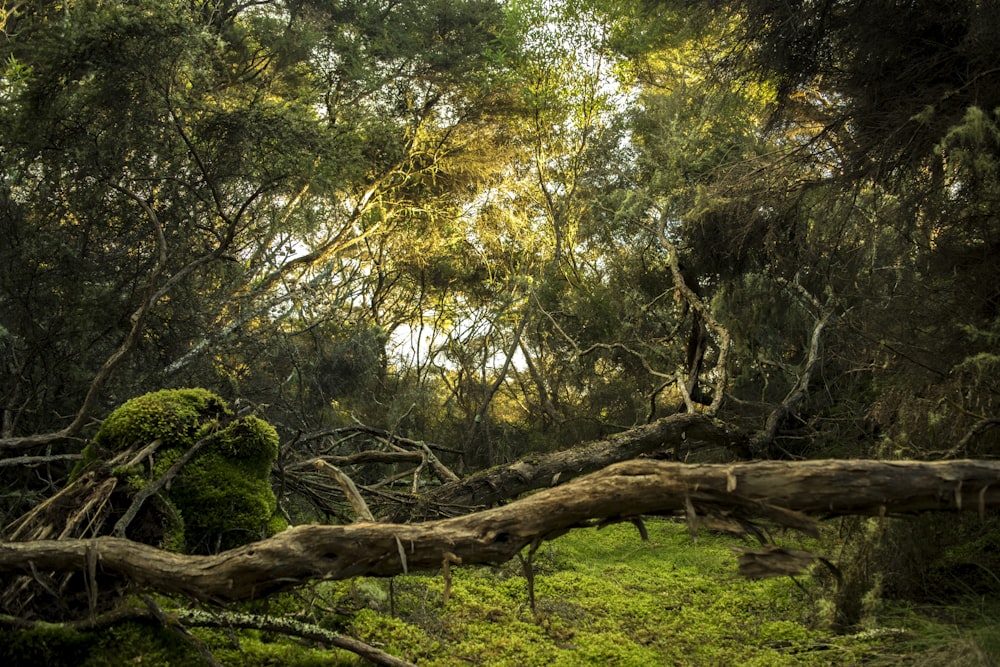
4. Weight of your equipment
The size of your backpack and weight of other equipment (your boots, clothing etc.) will have a say in how fast you can move along the trail.
Wearing a heavy backpack will require extra energy to move, and this will limit your top (and comfortable) hiking speed limit.
Because the total amount of energy your body can use to move you and your equipment per mile can be considered constant, adding extra weight will lower your theoretical maximum speed.
This maximum capacity of course depends on your body size (your available muscle mass and additional energy expenditure) and physical shape (efficiency of energy utilization).
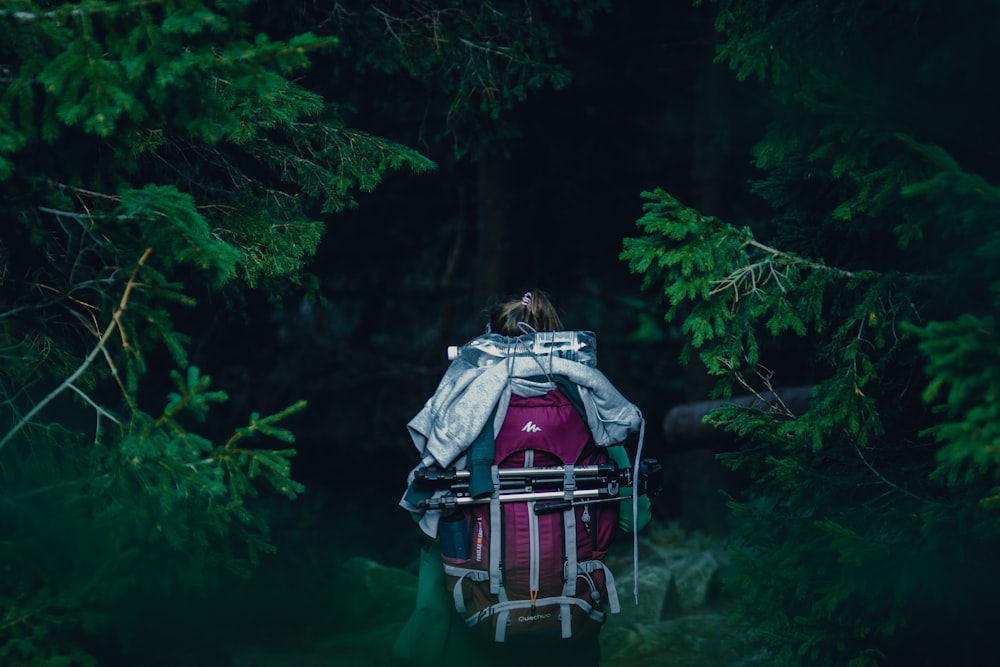
Theoretically the amount of extra energy spent carrying backpack can be roughly calculated using Newtonian physics stating that the work of moving a certain mass against the gravity (which is essentially what we are dealing with when hiking).
In the simplest example, carrying 10 kg (22 lb) extra in a backpack will cost around an additional 190 kcal or equivalent to the energy in 150 g of pasta or 4 bananas.
5. You – your weight and level of fitness
So, just as for carrying extra weight in your backpack, carrying extra weight on your body will slow you down unless this weight (read leg muscles) contributes to your maximum capacity (see point 4 above).
Except from useful skeletal muscle inactive tissues, such as body fat, will count as an extra load that does however also provide energy for low-rate physical activity such as hiking.
Your fitness level will determine your theoretical maximum energy turnover and therefore how fast you can hike in any given situation.
This number is often measured as the maximum volume of oxygen that can utilized by your body (VO2 max) as oxygen utilization is often the bottleneck in physical performance.
These measures will of course improve the more exercise you do and the lighter your body is compared to your absolute strength.
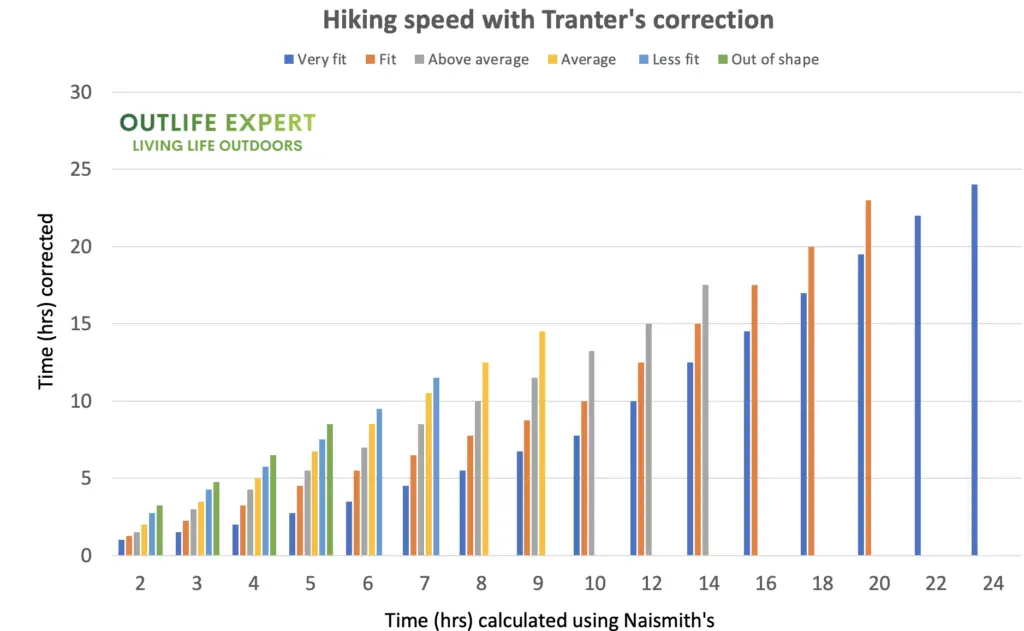
The agility of your body also matters, especially when hiking through dense forest terrain. Some people can lift their feet higher, tolerate more extreme positions and bend down under branches that may otherwise poke your eyes out.
6. Energy and hydration
For your body to hike at its maximum speed, you need to be hydrated and energized. This requires that you drink enough water during your hike and that you consume enough quality calories.
Scientific studies indicate that especially older people are prone to dehydration when hiking and that this impacts muscle power and navigation.
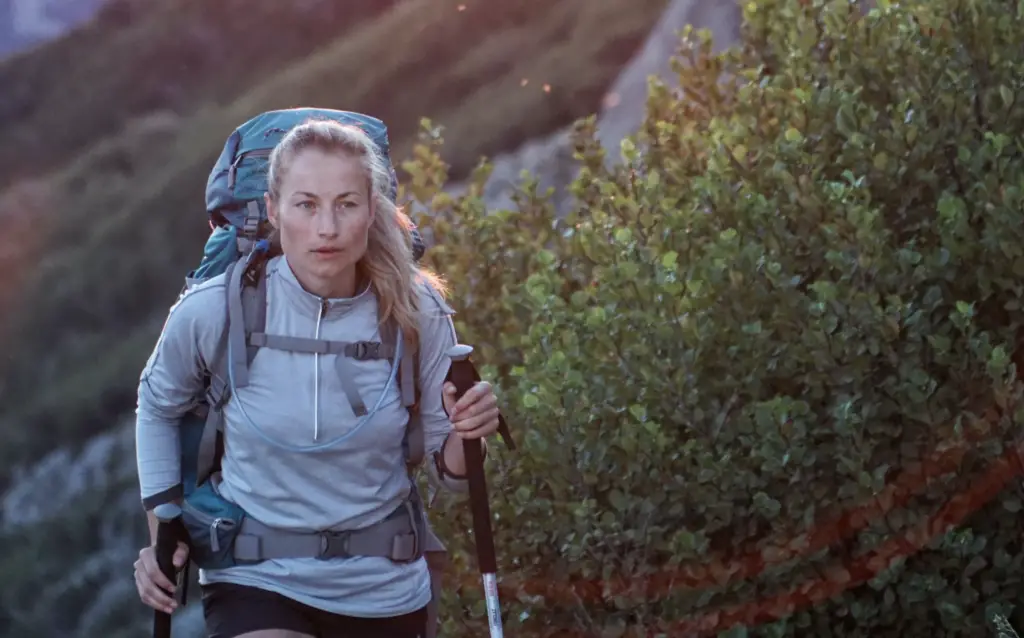
Intake of proper nutrients that releases energy gradually, as opposed to causing a sudden spike in blood sugar, is essential for muscle function during a long hike.
I personally eat whole-grain meals for example oatmeal for breakfast before a long hike and then snack on fat and protein-rich foods such as nuts and seeds during the day.
7. Dealing with insects and other wild animals
A lesser factor that is more dependent on the geography of your hike, is the existence of pests that will slow you down. Hiking in a tropical forest full of insects and lurking serpents hiding in the vegetation may slow you down further.
Having to waft away mosquitoes or scratch an itching mosquito bite and keep an eye out for snakes, spiders or larger animals may be daunting and time-consuming.
This is of course more of a problem in the tropics and walking in colder areas such as the pine forests of Alaska may not pose the same challenges. However, just as in the jungle there may still be similar dangers in the form of bears and mosquitoes.
8. Doing other things along the way
The speed with which you hike is of course also dependent on what other activities you might have planned along the way.

This may be for a bathroom break or for eating lunch, but walking in a dense forest is also a great opportunity to observe the wildlife or take photos. Because every stop you make during your hike will slow down your average speed, this will postpone the time to your destination.
If you are into hiking and outdoor adventures, check out my 20 favorite lightweight backpacking tents for under 200$ and my top 10 recommended gear items for new hikers!
You will also want a good (filter?) drinking bottle and a proper hiking backpack (I prefer Fjällräven or Osprey!) but The North Face also makes good cheap hiking gear.
Is it faster to hike along a river bank that goes through the forest?
When walking through the dense forest, one might think that the open landscape right next to a river will constitute a faster path through the forest.
This can be true when the vegetation of the forest does not tend to grow all the way down to the river. This may for example be the case for most pine forests.
However, for tropical rain forests, mangroves and other more water-tolerant vegetation will grow all the way down to (and in) the water, so here there is no benefit in taking the route along the river.
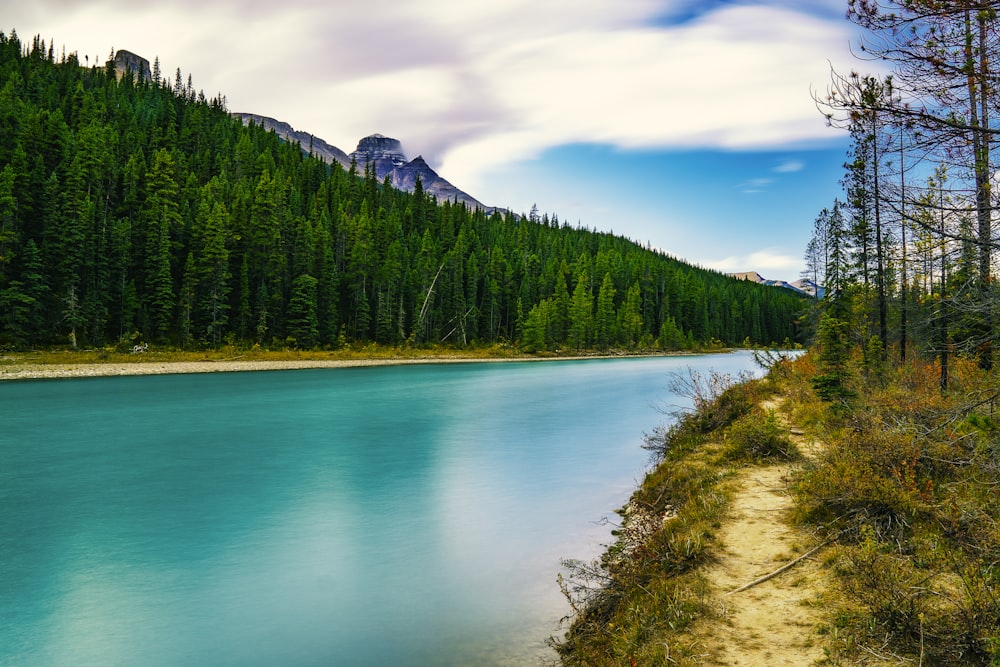
There are also situations where the river is not following the general direction of your intended route. In that case, any marginal speed gained may be compensated by the extra mileage added by following the river.
Alternatively, if you have a boat, canoe, or kayak available sailing on the river is of course much faster than walking alongside or in the river.
In the rare case that the river has dried out without leaving too muddy a river bed, walking directly on the ground where the river used to run may also be a faster option than walking through the dense forest.
Final thoughts
Estimating how long it takes to hike through a forest, or any terrain for that matter, is not a trivial task. However, in this post I have tried to outline some of the most realistic estimates and the factors implicated in hiking seed.
Also, make sure to take a look at my list of affordable hiking gear or my extensive list of super cheap lightweight hiking tents that will make you even faster when walking through the forest!

